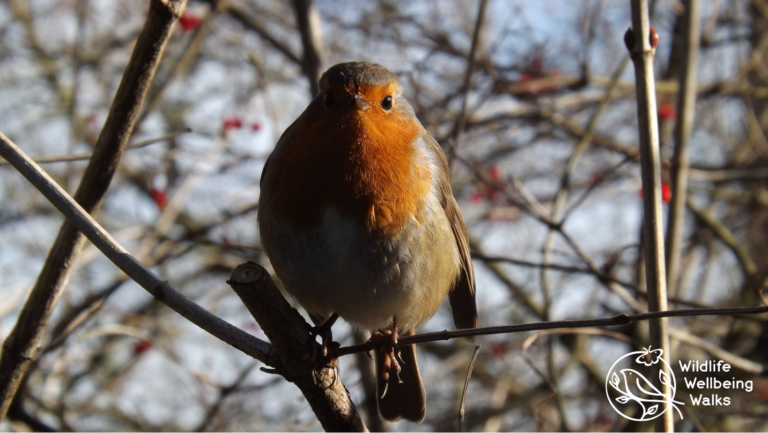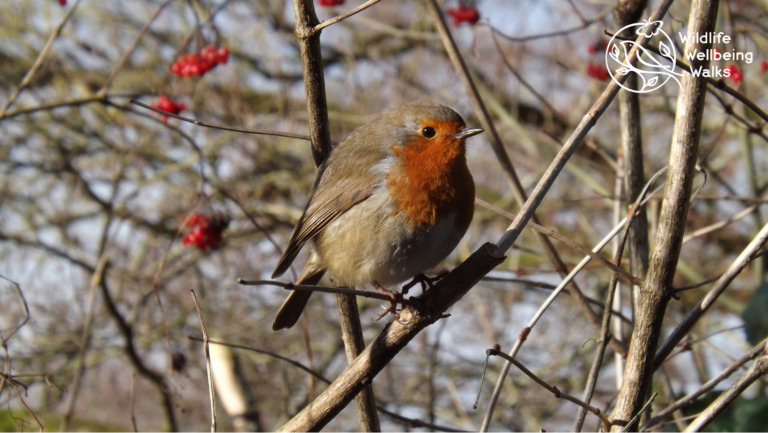
Robin – Erithacus rubecula
With migration firmly in my mind for this month, I thought I would share some information about a much-loved and familiar bird species that mostly stays close to home.
The robin (aka Robin red-breast) usually doesn’t move more than 5km from its territory at any time of the year, although some females will migrate to warmer areas of southern Europe ahead of the winter. Those which remain during the winter season are fiercely territorial and both sexes sing during this time of the year. The singing is intended to prevent physical disputes, but they have been known to fight to the death over territory!

In mainland Europe the robin can be quite a shy, forest-dwelling species. So why is it different in the UK? Much of our island has been deforested and converted to farmland. The robin is well-known as an insectivorous species, and in the colder months of the year may rely on other species to help it get at it’s food. Traditionally, it would have followed wild boar around as they turn over earth in search of food. This is particularly important in winter months when the ground is frozen. Back to the UK, where wild boar had been hunted to extinction… but humans were ploughing the land. The canny robin followed this instead, and this is one of the reasons they will follow gardeners as they turn the soil. We’ve replaced the wild boar and the robin has become less afraid of people because they associate them with food.
